| Shape: | Carbon Fiber Plate |
|---|---|
| Raw Materials: | Polyacrylonitrile-Based Carbon Fiber |
| Performance: | High-Strength Type |
| Samples: |
The color of the sample is black or customized
|
|---|
| Customization: |
|---|
|
Shipping Cost:
Estimated freight per unit. |
about shipping cost and estimated delivery time. |
|---|
| Payment Method: |
|
|---|---|
| Initial Payment Full Payment |
| Currency: | US$ |
|---|
| Return&refunds: | You can apply for a refund up to 30 days after receipt of the products. |
|---|
Suppliers with verified business licenses
 Audited Supplier
Audited Supplier 

| Length | 250 | mm |
| Width | 225 | mm |
| Weight kg/m2 | 1.28 | kg/m2 |
| Length/Width Tolerance | +- 2.5 | mm |
| Tensile Strength at 0/90° | 503 | MPa |
| Tensile Strength at 45° | 557 | MPa |
| Elongation at Break at 0/90° | 2.27 | % |
| Elongation at Break at 45° | 3.13 | % |
| Youngs Modulus 0/90° Gloss Side in Compression | 32.4 | GPa |
| Youngs Modulus 0/90° Gloss Side in Tension | 31.6 | GPa |
| Density | 1152 | kg/m³ |
| Glass Transition Temperature | 80 | °C |
| Tensile Modulus at 45° | 32.3 | GPa |
| Tensile Modulus at 0/90° | 37.2 | GPa |
| Fiber Orientation | Quasi Isotropic |
| Tg Onset (DMA) | 80 | °C |
| Gross Weight | 0.08 | kg |


| 1mm | 2mm | 3mm |
| 210g 22 twill 300g +/-45 biax 210g 22 twill |
210g 22 twill 300g +/-45 biax 650g 22 twill 300g +/-45 biax 210g 22 twill |
210g 22 twill 300g +/-45 biax 650g 22 twill 210g 22 twill 650g 22 twill 300g +/-45 biax 210g 22 twill |
| Thickness | Thickness & Tolerance | Weight kg/m² |
| 1mm | 0.9mm +/-0.2mm | 1.28 |
| 2mm | 1.7mm +/-0.2mm | 2.40 |
| 3mm | 2.8mm +/-0.2mm | 4.08 |







Suppliers with verified business licenses
 Audited Supplier
Audited Supplier